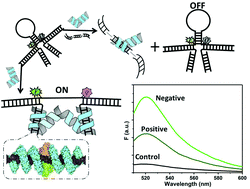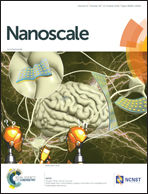High-specificity double-stranded DNA detection with a “humanoid” molecular beacon and TALEs†
Abstract
Owing to the limitation of DNA-specific recognition, improving the sensitivity of bacteria detection without additional culture poses a considerable challenge. Herein, a sensitive, novel, and high-specificity fluorescence detection method was developed using transcription activator-like effectors (TALEs) as the specifically recognized element. Based on the property of TALEs for recognizing double-stranded DNA, the detection method was first proposed. Its sensitivity was further improved by isothermal amplification of RPA. The “humanoid” molecular beacon (H-MB) was designed to achieve signal output. The steric hindrance of the protein opens the stem, enhancing the fluorescence intensity of an attached FAM/BHQ-1 pair. This method can be used to detect Escherichia coli O157:H7 with single-base mismatch specificity and high sensitivity (detection limit of 3 cfu mL−1) and can be applied in actual sample detection by boiling the sample for 10 min. TALEs can be assembled according to the target, so the method can be used to detect other foodborne pathogens and viruses in the food safety and clinical fields.



 Please wait while we load your content...
Please wait while we load your content...